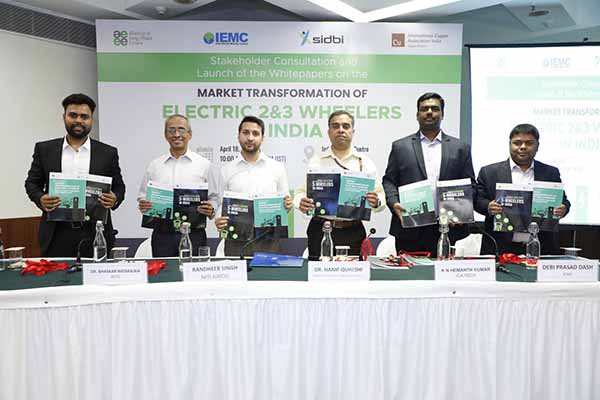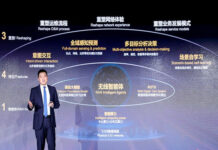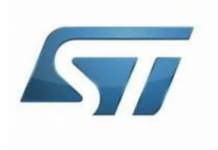Alliance for an Energy Efficient Economy (AEEE), one of the leading organizations in India enabling energy efficiency policy and its implementation across sectors, in partnership with the International Copper Association of India, launched whitepapers on ‘Market Transformation of E3W’ and Market Transformation of E2W’ in India. The whitepapers were unveiled by Dr. Hanif Qureshi, Joint Secretary, Ministry of Heavy Industries and Randheer Singh, Director-E-mobility, NITI Aayog, reiterating the adoption of electric 2-wheelers (E2Ws) and electric 3-wheelers (E3Ws) in India.
The launch event hosted by AEEE and ICA India with support from IEMC and SIDBI, also held stakeholders’ consultations with sectoral experts and industry professionals, focused on the opportunities and challenges involved in transitioning to electric 2- and 3-wheelers respectively, including the current state of the market and potential areas for growth. The consultation hosted notable speakers such as N. Mohan, CEO, EV Cell, Delhi Transport, Rajiv Kumar, General Manager, SIDBI, Srinivas Rani, Founder, Zero21, Priti Bhatnagar, Head (ETD), Bureau of Indian Standards (BIS), Jyoti Gulia, Founder, JMK Research and Om Dutt Vashisth, VP-Supply Chain, Hop Electric among various others.
Key highlights of the Market Transformation of Electric 2-wheelers are as follows:
- Extension of FAME II scheme is critical to accelerate the adoption of Electric 2 wheelers in the country by making them economically viable to consumers.
- The study results showed that rising fuel costs and the desire to be pollution-free were the main barriers to not buying an ICE two-wheeler, indicating that cost savings and environmental considerations are key drivers for consumers considering purchasing E2Ws. Warranty and battery replacement costs, low margins, the lack of supplier credit facilities, and battery backup impede the E2W dealer’s ability to sell electric vehicles and compete with other dealers.
Commenting on the findings, Dr. Vikas Nimesh, Senior Research Associate, AEEE, said, “The Indian government has set a target of achieving 80% adoption of electric two- and three-wheelers in the country by 2030, with a specific focus on promoting E2W adoption. Through this report, we aim to support the acceleration of adopting E2Ws and assist all stakeholders in the EV ecosystem, including the government of India and OEMs, in achieving the national goal. By promoting E2W adoption, we can help India to achieve its national targets of reducing carbon emissions and enhancing sustainable transport.”
Key highlights of the Market Transformation of Electric 3-wheelers are as follows-
- 30% of drivers surveyed preferred not to retrofit their vehicles, as they lacked trust in the performance and range of EVs.
- 79% of respondents believed that new E3Ws were more robust than retrofitted ones, indicating a need for reliable and durable E3Ws in the market. 13% highlighted the issue of non-functional charging points when asked about charging stations near their area of operation.
Further, on the prevalence of E3W, the findings reveal that 63% of the respondents cited low operations and maintenance costs as the primary reason for buying an E3W. However, safety concerns were also raised, with 68% of respondents stating that they received no security briefing at the time of purchase or after, and 26% claiming that there were no safety features in their E3Ws. Additionally, 55% of drivers were unaware of the safety features present in their vehicles, indicating the need for increased awareness and education on safety measures.
Mr. Hemanth Kumar, Director, ICA India, added, “The transformation of the E3W market presents numerous opportunities for individuals, organizations, and governments to drive sustainable transportation solutions and reduce their carbon footprint. To maximize the benefits of this transformation, it is important to ensure widespread accessibility and affordability of E3W and to invest in the development of the charging infrastructure needed to support their widespread use.”















